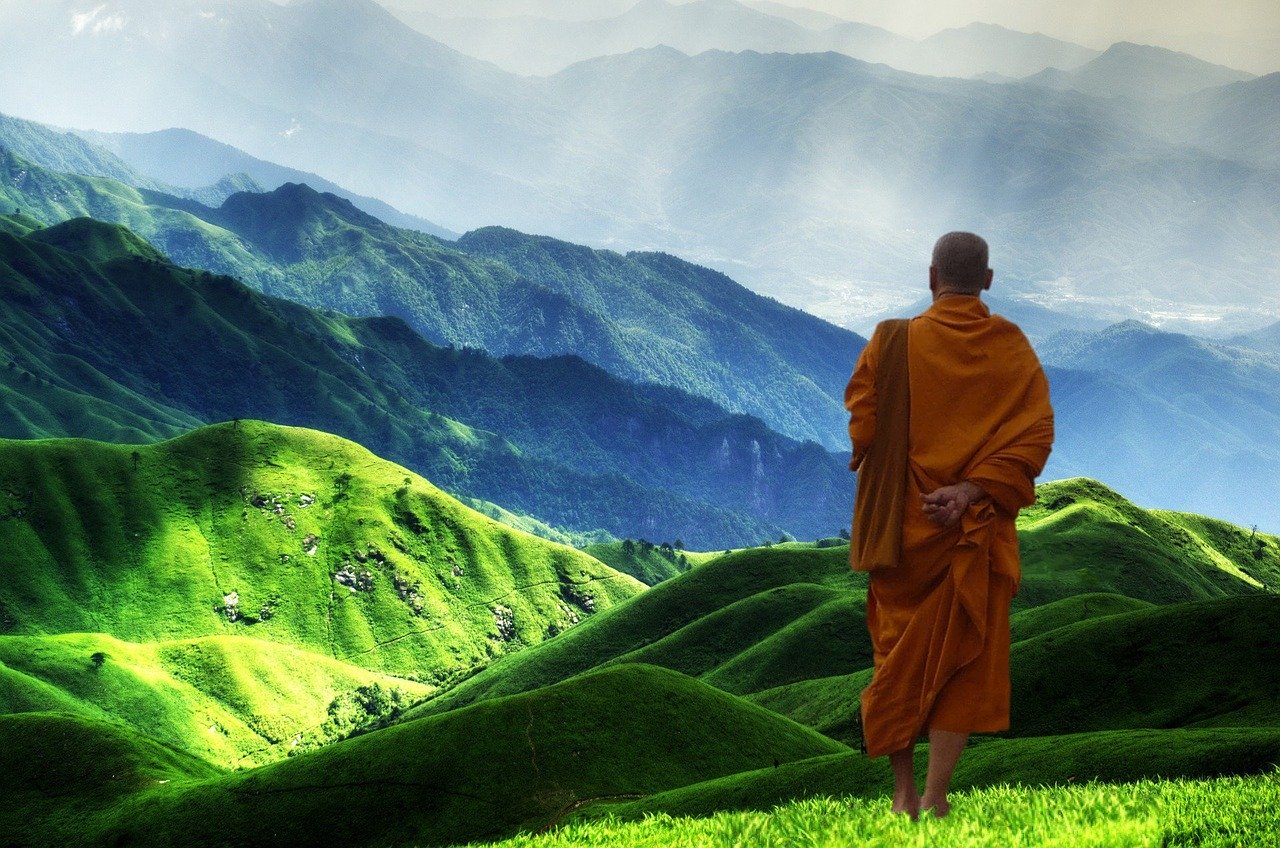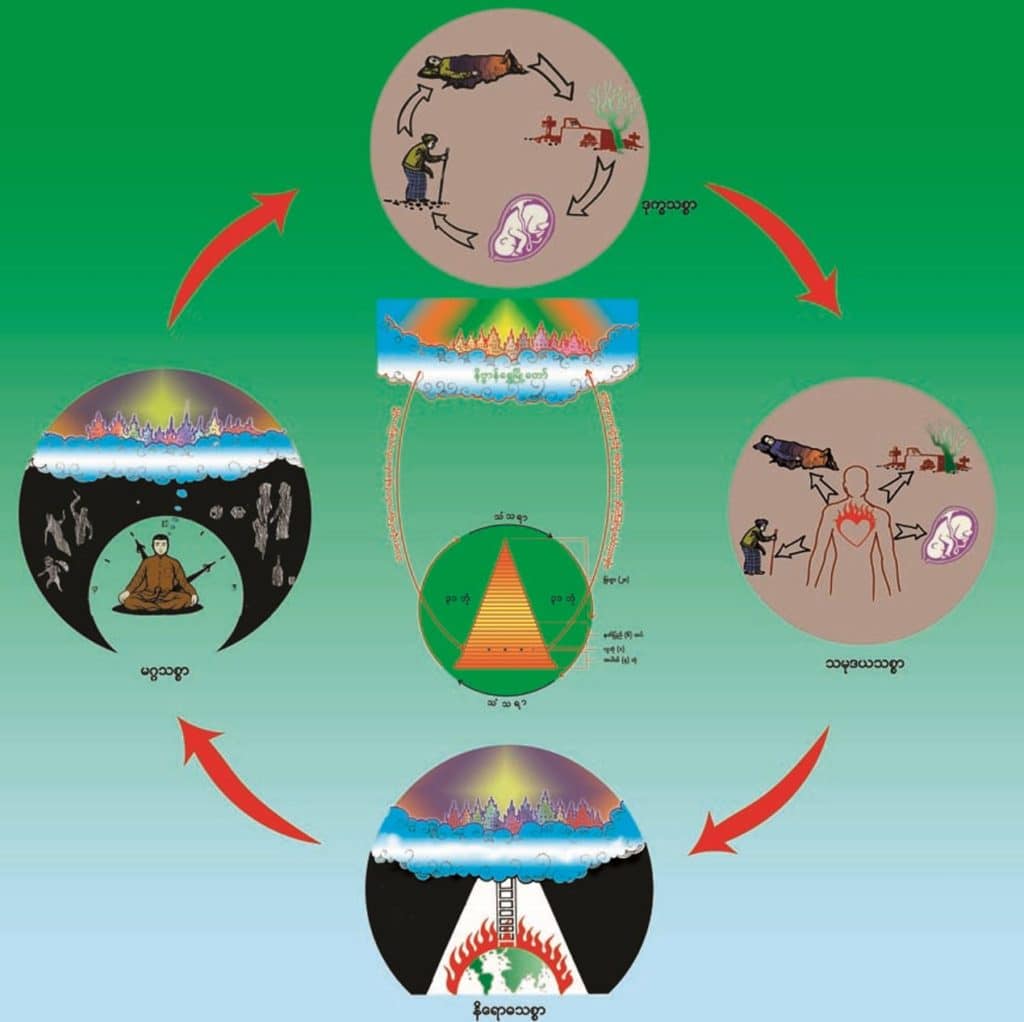Sharing Christ With Your Buddhist Friend Or Neighbor

How do you share the gospel effectively with Buddhists? We have been posting recently on how to communicate the gospel to people of other religions. This week’s post is written by Jay Judson. He has seen thousands of Buddhists come to Christ. Through his team, a large Disciple Making Movement began in a primarily Buddhist land.
When a Sister Begins to Sow the Gospel
Sister Soe Soe is a semi-literate Buddhist Background Believer. She came to Christ through relief efforts in the Delta region of Burma in 2008. Cyclone Nargis brought a wall of water forty miles up the Irrawaddy Delta killing 140,000 Burmese in a single night.
During this time, Sister Soe Soe received relief aid and heard the good news of Christ. Within three months of her baptism, Soe Soe started a network of twenty house churches.
Her coach modeled how to use the Picture Bible to discuss Christ. This Picture Bible helps defer embarrassment. People looked at the pictures and not to the face of the often shy facilitator.

Soe Soe was trained to tell the Bible story orally. She then had the listeners repeat the story back to them before asking a few questions to pull out truths about Christ.
Through this, she first led her sister to Christ, then her husband. Several months later, her entire family believed. Her coach gave her a book that compared the claims of Christ to the laws of Buddha. Sister Soe Soe could repeat the simple presentation even though she could not read it very well. Any time anyone asked Soe Soe questions about Buddhism and Christianity that she was unable to answer, she showed them the book.
Most of the churches we work with have been started by women like Sister Soe Soe. The Four Noble Truths of Christ book gave the key spiritual terms that worked in her context. It also increased her confidence to proclaim the good news that:
1) Christ offered His life on the cross for the forgiveness of sins.
2) He was buried and rose from the dead. Luke 24:45-48, I Cor.15:1-5
3) Christ will set His followers free from the cycle of sin and suffering. Romans 8:2
4) Christ will take them to the Golden City of Nirvana. Revelation 21:4
We strongly suggest sharing Jesus’ life story first before going back to the Old Testament. See the nine barriers you can download here for the reason why. This movement started in 2004 and spread to every state in Burma as well as to surrounding countries.
Starting Churches
A temporary training church was modeled for me by Dr. George Patterson. We used this for six months. Then, we developed an indigenous simple way to worship Christ in homes, one that fits Buddhist background believers.
Five years later the Holy Spirit taught us that healing is not merely descriptive, but is a command of Christ. We have seen every miracle in the book of Acts including three people raised from the dead. Praise God!
Miracles are key, but unless new believers are given a clear explanation of why they left their religion, they fall back. Previous patterns of unbelief return.
We have only seen three percent of the hundreds of thousands of baptized fall away. Healing plus a clear gospel bridge helps us retain new disciples. It provides an answer for their faith.
Both cultural outsiders and insiders can discover these bridges. Best practices of indigenous local believers need to be studied and reproduced.
Watch me present the basics of this presentation developed by “the Major” via this YouTube link.
What Honest Buddhists Believe
After meditating five hours every day for three years, the Major, a lawyer, had an important insight. He saw in Buddha’s law (the Four Noble Truths) that he had no chance of escaping the endless cycle of sin and suffering. It is a result of one’s sin.
Honest Buddhists admit that they have no hope of hitting the mark of a hundred percent perfectly sinless life. Buddha’s law requires we extinguish the flame of sin that Buddha declared burns inside of every person.
Understanding the 4 Noble Truths of Buddhism
Buddhism teaches these four primary truths. Anyone working with Buddhists needs to understand these foundational beliefs.
1st Truth: Life is suffering—dukkha.
All of life is caught up in a constant cycle of suffering called dukkha: we are born, get old, get sick, and die. After death, the cycle starts all over again: we return as a human or a low spirit or as a high spirit, an animal, or a demon.
2nd Truth: Suffering is from cravings—samudaya.
All are born craving, clinging to things that pass away. The Abidamma Pitaka scripture calls this evil craving a ‘black fire’—a burning inside of every person. The monks say every person is born with ten evil cravings.
They are called the Ten Fires of Kilesa. According to Buddhist teaching, the ten flames of the ‘black fire’ defile our mind and body. They are: killing, stealing, committing adultery, lies, dissension, greed, planning to destroy others by trickery, verbal abuse, wrong thinking, and idleness.
The purpose of meditation is to get rid of sin. The Tripitaka states that there are thirty-one levels of existence. One must remain sinless for eons and eons of time to escape the cycle of sin and suffering. The thirty-one abodes are like a ladder, but you must be born in this world before attaining Nirvana.
If you commit one sin then you will never become a saint and enter Nirvana (A Buddhist version of a heaven-see below). This is the bad news of Buddha’s law. The Major says that Buddhists need to understand this bad news before they will be ready to engage with the good news of Christ’s salvation.
3rd Truth: Stop the cravings, and suffering will cease.
Samudaya (evil cravings, obsessions)—the ‘black fire’ in your heart— must be put out, and extinguished. Nibanna (Nirvana) is a place of no sin, no suffering.
Nibanna can only be attained by extinguishing the black fires of cravings kilesa. You must completely extinguish all evil yearnings, without any exception whatsoever.
4th Truth: The path for cravings to stop has eight steps.
The eight steps to the place of Nirvana (No Sin-No Suffering) are absolute, comprehensive, and require total perfection in each. They are (1) perspectives, (2) intentions, (3) speech, (4) abstinence, (5) livelihoods, (6) efforts, (7) contemplation, and (8) meditation.
The only one free from the cycle of suffering is the One who is 100% free. Jesus is absolutely, comprehensively, and totally free—of any flame from the black fire within. He is the One who alone can lead us over the bridge to the City, the place of no sin and no suffering…to Nirvana. This is the good news we have to share with Buddhists!
Buddha’s Four Noble Truths and Eightfold Path are taught in all forms of Buddhism. They teach that; the cycle of suffering and death, (i.e. reincarnation) is not merely a “second chance” as many Hollywood Buddhists express. Buddhism teaches that one should do religious ceremonies and live a life of perfection. This is how you can escape the cycle of reincarnation. These principles apply to all.
We made a movie showing indigenous forms of worship called “The Golden City”. Watching it will give you many more insights.
For some, these principles are very new. What questions or comments do you have? Place them in the comments below or email us and we will put you in touch with the author of this guest post. Check out his website Obedience Life. Jay has written further about nine barriers for sharing the gospel with Buddhists. Download the pdf of those via the link below.